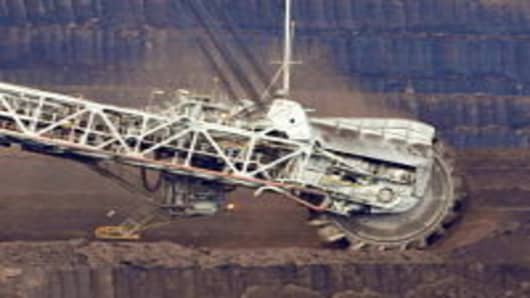Wayne Philips was not completely surprised when Onesteel announced plans to close its oil and gas pipe mill in Kembla Grange, 100km south of Sydney.
The local branch secretary of the Australia Workers Union knew the plant had been struggling because of the strong Australian dollar and cheap imports from China. But he hoped the company would find a way to keep the mill open, by reducing shifts or trimming the workforce.
Last Thursday that hope evaporated.
”When they announced the news it was still a bit of a thud,” he admits. “But it’s a fact of life that most of the steel work is imported. The local companies don’t get a look in.”
The fate of the Onesteel mill represents the flip side of Australia’s mining boom. Over the next few years, mining sector investment will reach new highs as a share of gross domestic product – it is likely to account for about 40 per cent of total business investment, according to the Reserve Bank of Australia.
But as the country moves to take advantage of its vast mineral wealth, some parts of the economy, even after 20 consecutive years of expansion, are only just managing to tread water. The pressures inflicted by the strong dollar and a wary consumer are forcing many companies to cut jobs or radically alter their operations.
“They say the economy is booming but it’s certainly not booming down here in Illawarra. People don’t like to talk about tariffs and protection...but what else do we have? Something needs to be done otherwise we are in dire straits,” says Mr Philips.
Overall, the economy grew by 2.3 per cent last year but figures released this month show the Australian economy ended 2011 on an unexpectedly soft note, growing at only 0.4 per cent in the last three months of last year, well below the most recent RBA estimate.
Additional data showed 15,000 jobs had been lost in February, that the unemployment rate had edged up to 5.2 per cent and that both consumer confidence and housing construction had fallen, adding to the sense of gloom.
“The GDP data and the labor force survey are telling the same story,” says Deutsche Bank economist Adam Boyton. “In our view that ‘story’ is that the economy is not – and has not been – running at a trend pace [growth of around 3.25 per cent] ,” he says, pinning the slowdown on the strength of the Australian dollar.
The Aussie as it is sometimes known is currently trading at $1.0537, its highest level in three decades.
Glenn Stevens, RBA governor, said on Monday that while monetary policy could help support demand it could not raise the economy’s trend rate of growth.
Trade exposed industries such as manufacturing, tourism and education are suffering as a consequence of the strong Aussie.
“The Australian dollar has traditionally been perceived as a commodity currency. But over the last year, the Aussie has strengthened despite the lack of any additional support from higher commodity prices,” explains Brian Redican, economist at Macquarie Securities in Sydney.
There are several reasons for this, he says, including Australia's triple A credit rating, its relatively high interest rates and increasing demand from sovereign wealth funds and central banks.
It is not just the high exchange rate that is acting as a drag on economic growth. Since 2008, Australia’s household savings ratio has risen sharply to 9 per cent as nervous consumers have looked to pay down household debt.
For all that, the Australian economy has and continues to fare better than most other advanced economies.
The minutes of the last RBA meeting underlined a belief that there was balance in the economy.
“Most information thus far had indicated that weakness in parts of the economy – including manufacturing, building construction and parts of the retail sector – was being approximately balanced by the strength in the mining sector and some services industries”.
But that is not the way Mr Philips sees it. He argues that Australia’s problems, and especially those of the steel industry, are related to protectionism.
“Our government does not seem to be taking into consideration that our competitors give some sort of protection and assistance to their local industry. We have this notion that everyone will stick to these fair trade agreements but we are the only team playing by the rules,” he says.


